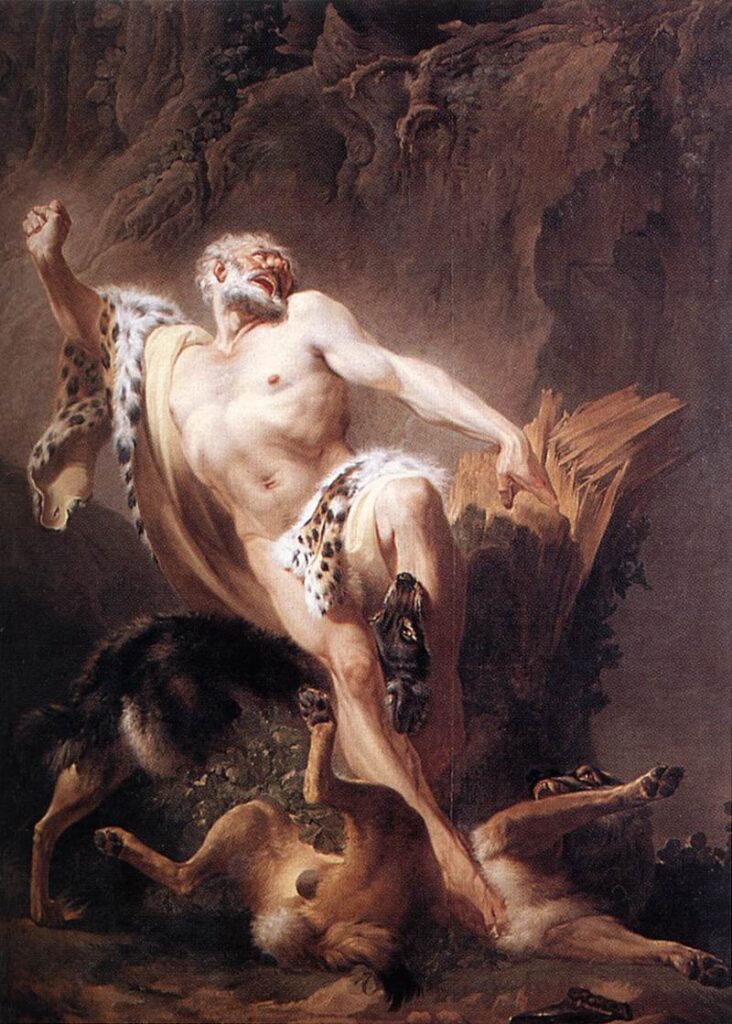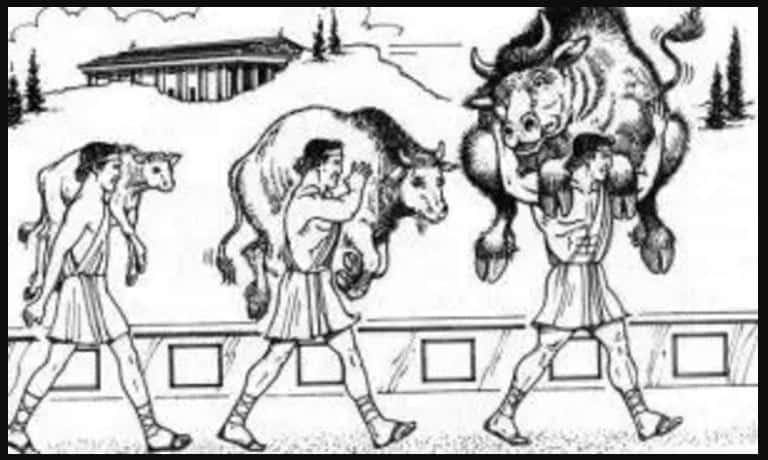- Wrestler
- Six-time Olympic victor:
- Won once in boys' wrestling, 60th Olympiad, 540 BCE
- five-time wrestling champion from 62nd to 66th Olympiad, 532 to 516 BCE
Milo of Croton. Most of us are familiar with the fact that the Olympic Games originated in Ancient Greece. In fact, our modern games, which began in 1896, are still going strong. Over the years we’ve seen countless numbers of top athletes compete as people break records in their sports on a constant basis. As it turns out, the modern games aren’t the only ones where the athletes are celebrated. The Ancient Olympic Games have had their share of top athletes, as well. Milo of Croton is one of these competitors. Here is more information about who he was and what he was known for:
About Milo of Croton
Milo of Croton was born in the 6th Century B.C. in the city of Croton, which was located in the area of Ancient Greece known as Magna Graecia. Although he also had a military career, he was perhaps best known for his athletic ability in the sport of wresting. The exact dates of his birth and death are unknown, but historians believe that he was definitely alive in the 6th Century B.C. based on the fact that he has been referenced in several other sources, namely the fact that his Olympic victories in wresting were carefully recorded.
Growing up in Greece, Milo had always admired the Greco-wrestlers training in Croton. They were universally admired by the townspeople, possessed unbelievable strength and had bodies carved out of granite. Milo’s admiration for such men was so strong that from a young age he made the decision to become just like them.
In achieving his dream Milo ‘discovered’ progressive weight training. Legend goes that one day, Milo stumbled upon a newborn calf near his household. Rather than walk past the calf and continue his daily business, Milo hoisted the calf onto his shoulders and carried the small animal on his shoulders. The next day, Milo did the exact same thing. And the next day….and the next.
While lesser men would have grown bored of such an activity, Milo flourished. Each day the calf grew bigger and each day Milo carried incrementally more weight. After four years of carrying the calf to and fro, Milo was capable of lifting a heavy bull on his shoulders with ease.
Milo of Croton’s Athletic Career
As mentioned above, Milo of Croton is most known for his athletic career. He showed physical prowess from a young age. Total, he won six victories at the Olympic Games in the sport of wresting. The first time that he won was around 540 B.C. He won five more titles in the Olympics in wrestling when he was an adult, and each of these victories took place anywhere between 536 B.C. to 520 B.C. However, he wasn’t just an athlete in the Olympic games. He also won seven total victories in the Pythian games, ten victories at the Isthmian games, and nine victories at the Nemean games. He is considered to have been one of the most decorated athletes in Ancient Greek history.
Ancient Greek Athletes Were Famous
It’s true that the top athletes of Ancient Greeks were considered to be famous, and Milo of Croton was no exception. Part of the allure of these athletes is in the rituals they underwent in order to improve in their sports. They would isolate themselves to their training grounds and consistently practice their sports until they were convinced they could become champions. Once the public did see their athletes emerge, it was on the competitive stage, which means that the players probably looked a bit larger than life. Once an athlete, such as Milo of Croton, wins a championship, the people remember who they are. Over time, they become part of the public consciousness and achieve celebrity status.
Although Milo of Croton also had a military career, he achieved the most success as an athlete. However, the fact that he was a proficient athlete also helped him become a better soldier, especially since his sport of choice was wresting, which was a skill that could easily translate to battle.
A follower of the famous philosopher Pythagoras, Milo once saved his friends. It happened that the roof of the hall where the Pythagoreans were meeting began to collapse. Milo stood and supported the central pillar until the others escaped to safety and then dashed out, saving himself.
His Death
In the end, however, all of this fame and strength did not save Milo from a less than glorious death. Milo was wandering through the forest when he found an old tree trunk with wedges inserted into it. In an attempt to test his strength, Milo placed his hands and, perhaps his feet, into the cleft of the trunk and tried to split apart the wood. He succeeded in loosening the wedges, which fell out, but the trunk closed on his hands, trapping him. There, according to the tale, he fell prey to wild beasts.



